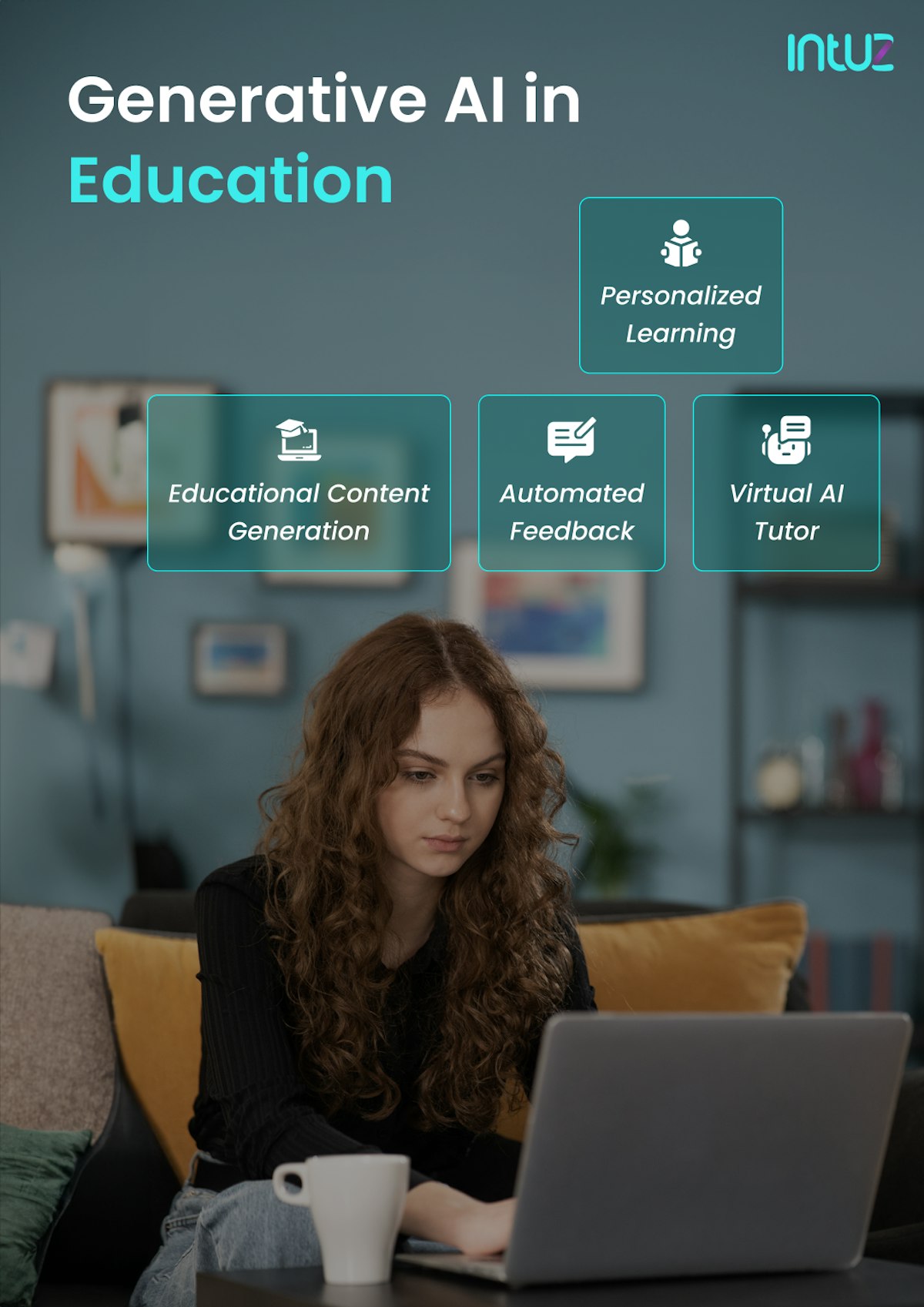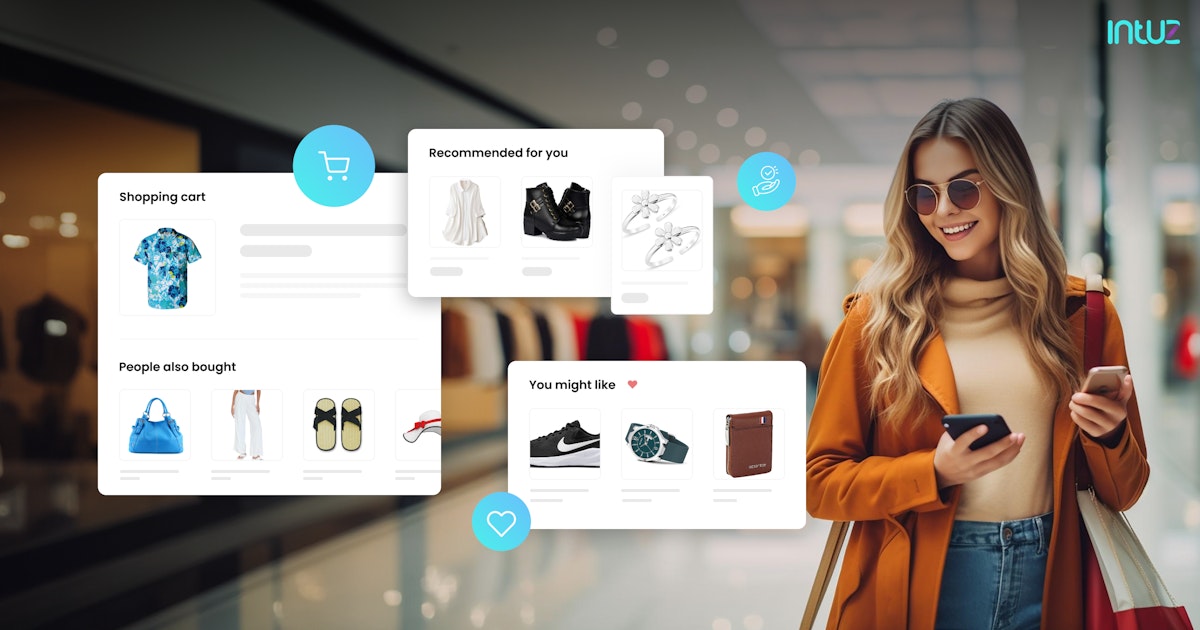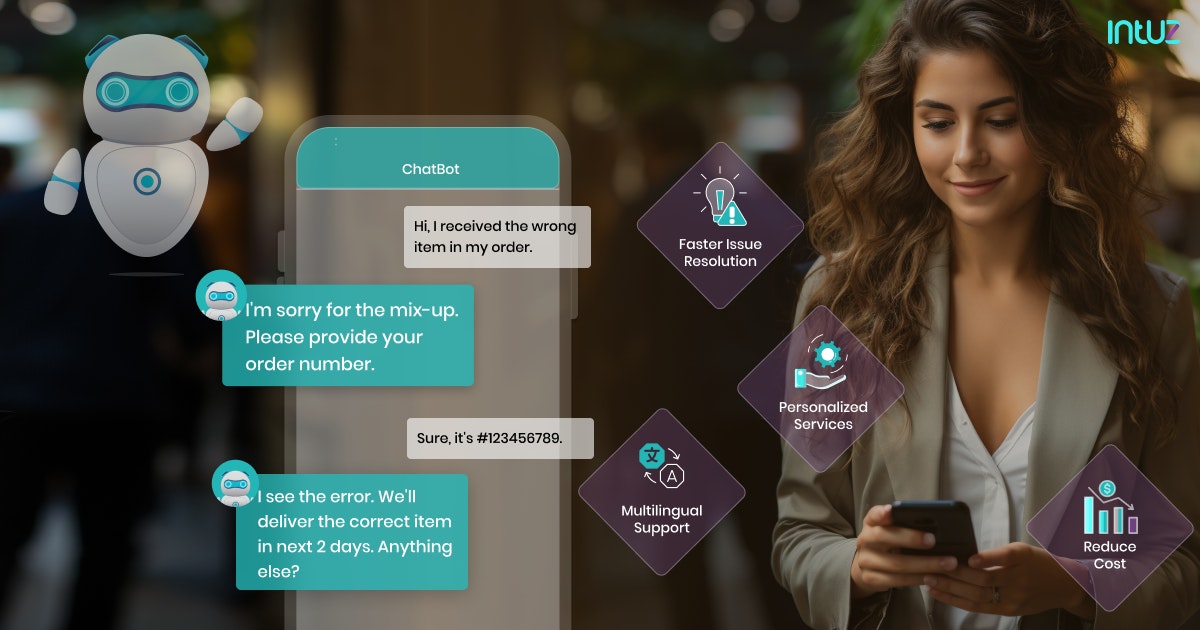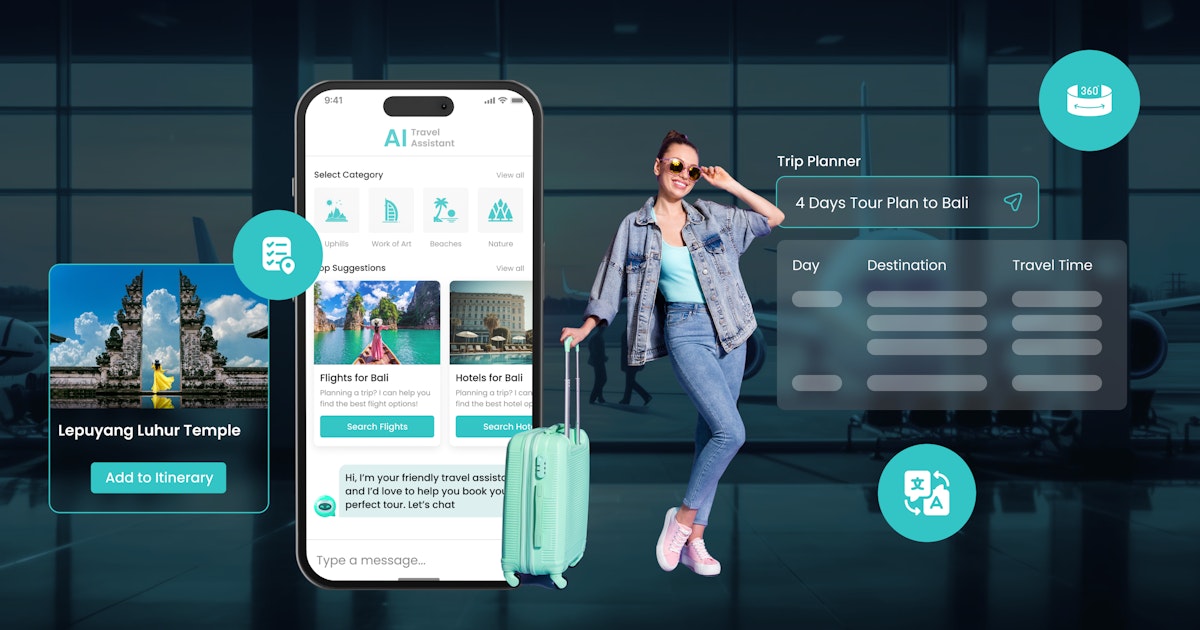Table of Content
Traditional education is a structured system of learning that involves a direct transfer of knowledge from teacher to student in a classroom setting. A standardized curriculum focuses on core subjects like science, mathematics, languages, and social studies.
Although foundational to societal and personal development, this education model is highly impersonal. It emphasizes uniform assessments and assignments that don’t necessarily address individual learning styles or pace.
Moreover, students with disabilities or those from diverse cultural backgrounds may not find traditional learning methodologies or classrooms adequately inclusive or accommodating of their study requirements.
What is AI-driven personalized learning?
AI in eLearning offers a future where personalized learning is the norm and AI tutors generate personalized educational materials according to each student’s needs, preferences, and capabilities, regardless of where they are in the world.
Generative AI specifically presents an opportunity for education institutions to bridge the gap between varied learner requirements and innovative teaching formats, thereby improving overall learning outcomes.
The best part is that there’s research to support that half of higher education students are Generative AI users, and 61% of teachers agree that this technology is set to positively impact learning.
Key takeaways
While integrating Generative AI requires an initial investment, it doesn’t significantly increase the overall per-pupil funding in the long term.
The custom educational approach minimizes the risk of students repeating courses or dropping out, improving the institute’s reputation and student success rates.
By identifying areas where students typically struggle, such as language skills or conceptual understanding in STEM subjects, educators can utilize Generative AI to customize and enrich the curriculum.
AI-powered educational apps and platforms should prioritize user experience, accessibility, and inclusivity, requiring regular training in the Generative AI model.
Platforms like Duolingo, Khan Academy, and Cognii use Generative AI to elevate their learning delivery to different individuals.
Primary advantages of integrating AI into education
When you move away from conventional teaching practice and embrace personalization, you not only close learning gaps but also reap multiple benefits as a business, such as:
1. Achieving cost savings
According to a LEAP Innovations report, upfront investments in Generative AI for personalized learning for institutes cost no more than 7% of total per-pupil funding.
The total recurring IT spending doesn’t increase substantially, and by the fifth year, they account for only about 2% of the institute’s total budget.
That happens because you can minimize the need for physical resources and maximize teacher efficiency, as technology-enabled personalized platforms allow for custom instruction that can accommodate more students with fewer resources.
2. Enhancing student outcomes
Better academic performance is one of the apparent benefits of personalized learning. Students are more engaged and motivated when the lesson plans are in line with their learning process.
They also don’t mind spending more time absorbing new concepts, which leads to higher test grades and a better brand reputation. The personalized approach also decreases the likelihood of course repetition and dropout rates, another win for educational institutes.
3. Expanding new student admissions
The flexibility and convenience of custom education, facilitated by digital tools, are more appealing to students seeking learning methodologies and schedules that fit their lifestyles, budgets, and commitments.
When your institute implements this on a broader scale, you’re seen as innovative and responsive to student needs, making yourself more attractive to prospective students.
How Intuz Built eLearning Platform for Healthcare Graduates for Preparation of Advanced Medical Examinations
Explore NowHow educational institutions can integrate Generative AI into existing learning systems
There’s a simple framework that’ll help you harness the power of AI technology and deliver a learning experience that’s personalized, high-powered, and instinctive, apt for today’s diverse student body:
1. Identify learning objectives with teacher involvement
First, work closely with educators to map out how Generative AI can improve specific areas of your curriculum. Pinpoint subjects or skills where your students commonly encounter difficulties and could benefit from custom or varied course content.
For example, in language learning, objectives include increasing vocabulary, improving grammatical accuracy, or advancing conversational fluency. Additionally, consider developing broader competencies in your students, such as critical thinking skills, creativity, and digital literacy.
2. Choose the right generative model with an eye on specialization
Beyond the popular models known for text or image generation, such as GPT (Large language models) and DALL·E, find specialized generative models that align with the specific needs of your curriculum.
For instance, models that generate music could optimize arts education, while those that create code snippets could be invaluable in computer science courses.
You could even opt for models that simulate chemical reactions, physics experiments, or biological processes in a virtual environment. This would allow students to conduct experiments and observe phenomena without needing physical labs.
When selecting a generative model, don’t think about its educational utility but its ethical implications and compatibility with your institute’s technical infrastructure.
3. Collect and prepare relevant and inclusive data
For your institute to truly deliver an elevated educational experience, the vast amounts of data used to train your selected Generative AI model must support various perspectives and sources.
This includes incorporating materials representing different cultures, viewpoints, and levels of learning difficulty.
To achieve this, actively engage with a community of teachers, students, and parents who can contribute instructional resources, teaching aids, and course content, enriching the dataset and fostering a sense of ownership over the educational process.
Next, set up a review system involving subject matter experts to assess contributions for their educational value, inclusiveness, and alignment with learning objectives and improve the quality of the AI-generated content.
4. Continually train the generative model
View model training as an ongoing process rather than a one-time event. As the curriculum evolves and new educational challenges arise, it’s important to update and retrain the AI model so that it reflects the latest learning developments and pedagogical strategies.
Platforms such as Teachable Machine by Google, Microsoft Custom Vision, and IBM Watson Studio provide intuitive interfaces and guides for adjusting model parameters or adding new datasets.
5. Develop user-centric educational apps
Prioritize building apps with dynamic interfaces, accessible original content, and features that support different learning and teaching styles. Conduct surveys, focus groups, or prototype testing to inform your design process.
Besides, to lower your barrier to market entry, look for development platforms that offer drag-and-drop interfaces, pre-built templates, and extensive documentation.
To accommodate not only teachers but also learners with different needs and backgrounds, incorporate features such as text-to-speech, adjustable text sizes, and support for multiple languages.
6. Implement an evaluation and agile iteration framework
For each iteration cycle, set clear, measurable objectives in line with broader educational goals—for example, increasing student engagement in online modules by 20% over the next academic quarter.
To get a holistic view of the app’s impact at particular stages, adopt a mixed-methods approach to collect and analyze:
- Quantitative data, such as average time spent on tasks or frequency of app usage (through analytics tools and performance tracking)
- Qualitative feedback (via user surveys, focus group discussions, and one-on-one interviews)
Create a system for quickly developing, testing, and introducing new features or interactive elements based on your findings. Involve a cross-functional team of educators, students, and developers to ensure all perspectives are considered while making improvements.
7. Integrate Generative AI tools into the existing educational ecosystem
Collaborate with IT specialists and teachers to review the current digital setup and identify opportunities for integrating Artificial intelligence tools with minimal friction. Build plugins or APIs that enable these tools to upgrade the existing Learning Management Systems (LMS) and other software.
Create a suite of training resources tailored to the educators’ varying levels of familiarity with AI. These include online tutorials for self-paced learning, interactive workshops for hands-on personal experiences, and regular webinars to cover new features and use cases.
Set up a support team or helpdesk offering immediate technical assistance and pedagogical advice. This will ensure that educators have the help they need to troubleshoot issues, fully incorporate AI into their teaching strategies, and evolve these practices over time.
Real-life examples of educational institutes and Edu tech companies using AI
Even though the use of this technology is at a nascent stage, many well-known brands have already implemented it to deliver custom education, including:
1. Duolingo
In 2023, Duolingo, the popular language learning app, introduced its latest subscription tier, Duolingo Max, which comes with two new AI-powered features, Explain My Answer and Roleplay, developed in partnership with OpenAI.
With Explain My Answer, subscribers can know whether their answers in a lesson are correct or incorrect. All they need to do is tap a button after certain exercise types and enter a chat with Duo to receive an explanation of why their answer was wrong or right.
On the other hand, Roleplay allows subscribers to practice real-world conversation skills in the language they’re learning. The AI behind this feature is responsive and interactive, meaning no two conversations are alike.
After every interaction, subscribers get AI-powered real-time feedback on the accuracy and complexity of their responses.
2. Khan Academy
This non-profit educational platform uses Generative AI to create interactive learning environments where school students can engage in hands-on activities and experiments across a broad spectrum of subjects, such as math, science, grammar, and history.
The platform adapts to each student’s performance through AI algorithms, offering challenges and tests to match their current competency level. In addition, it provides instant feedback and explanations, encouraging students to explore and learn through trial and error.
3. Cognii
Another platform that offers personalized learning with Generative AI is Cognii, an AI-powered teaching assistant. It provides solutions for K-12, higher education sector, and corporate training.
With a deep focus on deep learning, critical thinking, and problem-solving skills, Cognnii adapts to the needs of every individual user and provides them with custom coaching. It does so by combining conversational pedagogy with Generative AI technology.
Cognii Virtual Learning Assistant engages learners in a chatbot-style conversation by prompting them to construct an answer, giving them instant assessment and feedback, and suggesting explanations for conceptual mastery.
Boost Engagement & Outcomes: Discover 5 Ways AI is Transforming Education
Read nowDeliver personalized learning with AI
With the AI education market predicted to reach $30 million by 2027 and 60% of educators already using the technology in classrooms, the future for Generative AI in this sector has never looked more promising.
As Nelson Mandela once said, “Education is the most powerful weapon you can use to change the world.” With Generative AI, make your educational institute a beacon of strength and much-needed support for teachers and students.
Book a 45-minute free consultation call with our AI expert to receive a complimentary strategy and actionable roadmap to integrate AI into your existing educational tech stack seamlessly.








